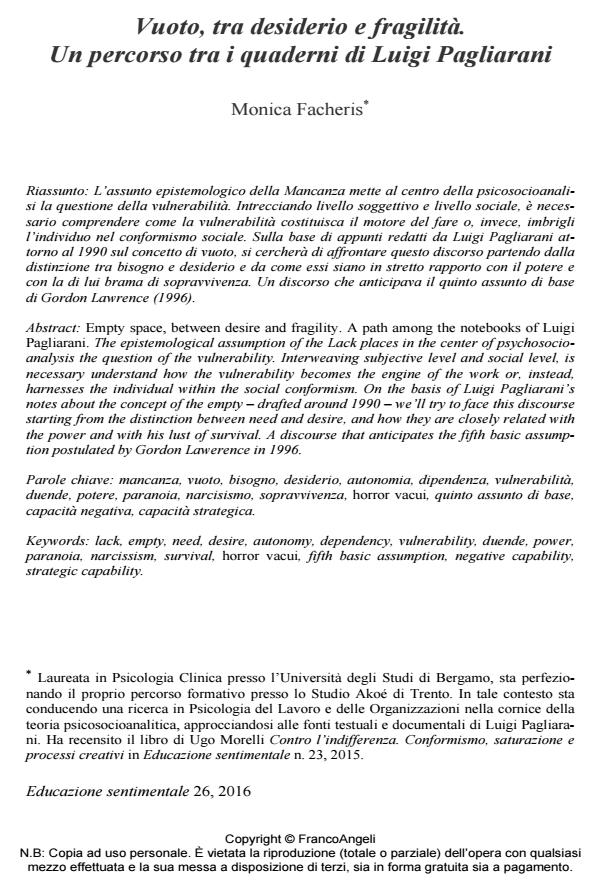Vuoto, tra desiderio e fragilità. Un percorso tra i quaderni di Luigi Pagliarani
Journal title EDUCAZIONE SENTIMENTALE
Author/s Monica Facheris
Publishing Year 2016 Issue 2016/26
Language Italian Pages 9 P. 8-16 File size 172 KB
DOI 10.3280/EDS2016-026002
DOI is like a bar code for intellectual property: to have more infomation
click here
Below, you can see the article first page
If you want to buy this article in PDF format, you can do it, following the instructions to buy download credits

FrancoAngeli is member of Publishers International Linking Association, Inc (PILA), a not-for-profit association which run the CrossRef service enabling links to and from online scholarly content.
Empty space, between desire and fragility. A path among the notebooks of Luigi Pagliarani. The epistemological assumption of the Lack places in the center of psychosocioanalysis the question of the vulnerability. Interweaving subjective level and social level, is necessary understand how the vulnerability becomes the engine of the work or, instead, harnesses the individual within the social conformism. On the basis of Luigi Pagliarani’s notes about the concept of the empty - drafted around 1990 - we’ll try to face this discourse starting from the distinction between need and desire, and how they are closely related with the power and with his lust of survival. A discourse that anticipates the fifth basic assumption postulated by Gordon Lawerence in 1996.
Keywords: Lack, empty, need, desire, autonomy, dependency, vulnerability, duende, power, paranoia, narcissism, survival, horror vacui, fifth basic assumption, negative capability, strategic capability.
Monica Facheris, Vuoto, tra desiderio e fragilità. Un percorso tra i quaderni di Luigi Pagliarani in "EDUCAZIONE SENTIMENTALE" 26/2016, pp 8-16, DOI: 10.3280/EDS2016-026002